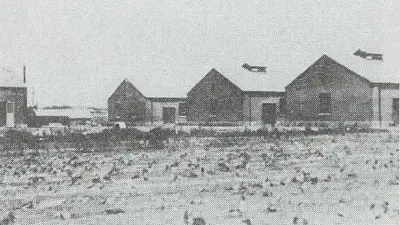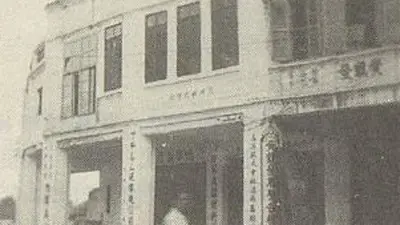Entry Into East Asia Led by Sankyo’s Third President, Teizo Shiobara
Sankyo Co., Ltd. (Sankyo), one of the predecessors of Daiichi Sankyo Co., Ltd. (Daiichi Sankyo), became a joint-stock company in March 1913 and expanded its business during the Taisho period, as shown by an increase in its assets that multiplied by over 8.5 times compared to the year it was founded. The primary contributing factor was the need to domestically produce essential pharmaceuticals in the 1910s as imports were disrupted by the First World War.
As a result, the company made a dramatic leap forward and became the leader of the Japanese pharmaceutical industry. The company also ventured into the chemical industry and diversified its business, resulting in significant expansion of its operations. However, Sankyo sought to expand its products and markets overseas.
Overseas expansion in Asia despite the impact of the 1929 Great Depression and wartime
The company opened a branch office in New York in November 1918, and in Taipei in May 1920. In September 1924, the “Sankyo Pharmaceutical Sales Office” was established in Dalian as an investment company and became the sole distributor of Sankyo products, marking the company’s first step in East Asia.
Although the company’s overseas expansion got off to a promising start, things worsened during the next few decades; namely, the Great Depression in 1929 followed by the chaos and destruction of pre-war era in Asia.
The Great Depression of 1929 and the lifting of the ban on gold exports in 1930 led to an economic recession, adversely affecting company performance. Pharmaceuticals were a necessity and in higher demand than ever. However, the company in China was forced to restructure its organization and framework to comply with new laws and regulations. Moreover, from 1936 to the following year, Sankyo underwent a change in its management.
In January 1936, Teizo, the eldest son of founder Matasaku Shiobara, who joined the company in August two years earlier, became one of the company’s representative directors. In April 1940, Matasaku became the chairman, and Teizo was appointed the company’s third president at the age of 31, which happened the year before the outbreak of the Pacific War. Despite worsening conditions, he forged ahead with the company’s expansion into East and Southeast Asia, while maintaining domestic production in Japan.
Sankyo’s East Asia business development (1929–1945)

The Dalian factory was established in 1929 and also produced
soy sauce and synthetic alcohol.
Sankyo began expanding its pharmaceutical operations in China in 1929 with the establishment of a factory in Dalian, producing items such as amino acid soy sauce and synthetic liquor. A sub-branch office was added in 1938. In 1940, a regional office was set up in Mukden (now Shenyang) to oversee operations, including the Dalian facilities.
The company broadened its presence with new offices and factories in Fushun, Tianjin, Qingdao, and Shanghai, manufacturing products such as agrochemicals, Adsorbin, and vitamin B1. In 1942, it opened a sub-branch in Guangdong and began experimental cultivation of medicinal plants and agrochemical raw materials on Hainan Island in 1944.
Sankyo’s office in Taipei was established relatively early in May 1920 to expand product sales, and in October 1941, it was reorganized to strengthen operations. (the company was subsequently given up at the end of the war).
Expansion of the sales network to Korea, Malaysia and Indonesia

The Hainan Island office was established in 1944.
In Korea in August 1930, the company established the “Chosun Sankyo Gumi Company Limited” by bringing together leading merchants in what is present-day Seoul Metropolitan City, and the following year an office was opened to expand product sales.
Teizo Shiobara, Sankyo’s third president, served as the president of both Chosun Sankyo Gumi Company Limited as well as of the previously mentioned Taipei office.
In 1942, an office and a factory were established in Kuching, North Borneo (now Sarawak, Malaysia), and in 1943, additional offices were established in Balikpapan and Banjarmasin in South Borneo (now Kalimantan, Indonesia), followed by factories in 1944, in which quinine tablets, a treatment for malaria, Orizanin (vitamin B1), and mosquito repellents were manufactured and sold. However, as the effects of the war expanded, the factories were eventually lost.
Even in the midst of wartime turmoil and chaos and destruction, Sankyo’s passion for providing medicine remained undiminished, and it continued to actively develop its overseas business.